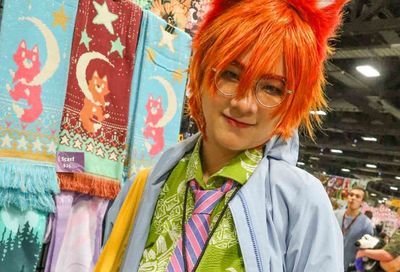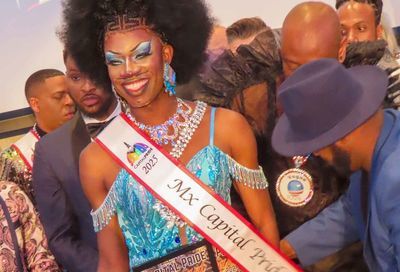Hot Pick: Orchids – Hidden Stories of Groundbreaking Women
U.S. Botanic Garden and Smithsonian Gardens celebrate the orchid and the women who helped foster them.

The more than a dozen women who have played an important if unheralded role in enriching our understanding of and appreciation for orchids are the focus of this year’s annual orchid show jointly organized by the U.S. Botanic Garden and Smithsonian Gardens.
The show highlights these unsung horticultural heroines alongside stunning displays of several hundred varieties of blooming orchids drawn from the vast living collections of both institutions.
As the exhibition makes plain, women have discovered and described new orchid species, developed new orchid hybrids, protected orchid habitats, and created breathtaking artworks inspired by orchids.
The 17th-century Chinese courtesan Gu Mei, who defied traditional gender barriers to become a respected painter, famously including her depictions of orchids, is one historical precedent referenced in the exhibition.
Other women singled out for advancing the field of orchidology include:
The “pollination pioneer” Edith Coleman, an Australian naturalist who discovered that certain orchid species mimic the shape of female wasps to entice male pollinators.
American biologist Rebecca T. Northen, dubbed “the Julia Child of Orchids” as a result of her 1950 reference book Home Orchid Growing, which helped demystify the subject for the average person.
Artist and naturalist Mary Vaux Walcott, known for her beautiful and scientifically accurate paintings of flowers that has influenced her field of botany in ways that has garnered comparisons to John James Audubon, the famous ornithologist who documented the birds of North America.
Naturally, modern artist Georgia O’Keeffe is also highlighted for her seminal paintings of flowers, but even more for her influence on other feminist artists who have “adopted the orchid as a symbol of female empowerment and sexuality.”
Another name that should be added to the list: Marjorie Merriweather Post. In fact, a bequest from Post in 1974 is what initiated creation of the Smithsonian Gardens Orchid Collection, now one of the world’s largest, containing more than 8,000 hybrids and species.
While the exhibition text and features can be viewed online along with images and supplemental instructional videos, the virtual offering doesn’t capture the full impact of seeing the vast array of flowers on display in the Kogod Courtyard between the Smithsonian American Art Museum and the National Portrait Gallery, at 8th and F Streets NW.
On view through April 24. Call 202-633-2220 or visit www.gardens.si.edu.
Support Metro Weekly’s Journalism
These are challenging times for news organizations. And yet it’s crucial we stay active and provide vital resources and information to both our local readers and the world. So won’t you please take a moment and consider supporting Metro Weekly with a membership? For as little as $5 a month, you can help ensure Metro Weekly magazine and MetroWeekly.com remain free, viable resources as we provide the best, most diverse, culturally-resonant LGBTQ coverage in both the D.C. region and around the world. Memberships come with exclusive perks and discounts, your own personal digital delivery of each week’s magazine (and an archive), access to our Member's Lounge when it launches this fall, and exclusive members-only items like Metro Weekly Membership Mugs and Tote Bags! Check out all our membership levels here and please join us today!






















You must be logged in to post a comment.